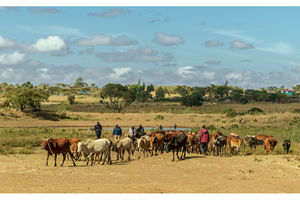HIV/Aids killing more men than women in Tanzania

What you need to know:
- Deaths related to HIV Aids has also dropped from 32,000 in 2020 to 29,000 in 2021
Morogoro. The Tanzania Aids Commission (Tacaids) has announced that the rate of new infections in the country has dropped with latest reports showing that there were 54,000 new infections in 2021 down from 68,000 in 2020.
Deaths related to HIV Aids has also dropped from 32,000 in 2020 to 29,000 in 2021
However, the commission’s Chief Executive Dr Leonard Maboko had sad news as the pandemic is killing more men than women in Tanzania mainly because most men rarely test for the virus which makes it difficult for interventions to be made in time.
“Men have not responded to the testing campaign as women have which makes it difficult for them to start early treatment,” said Dr Maboko
Speaking at a seminar in Morogoro, Dr Leonard Maboko said that despite the reducing number of new infections Tanzania is yet to reach the global goal because for that to happen the number of infections have to be below the number of deaths.
"New statistics show new infections and deaths have decreased. Currently there are 54,000 new infections and 29,000 deaths, but we still have a lot of work to do. When new infections are less then we can say we are now able to start eradicating this disease, “said Maboko.
He said there was already a positive trend in the country as new infections have been declining for the past 10 years now but there are still challenges for young people.
"Statistics show that in new infections every year 40 percent of young people get infected and among them young girls are 80 percent according to 2021 statistics show young people contribute 28 percent of new infections and these are between the ages of 15 to 24 a situation that gives us challenges, ”said Dr Maboko.
HIV prevalence has steadily declined over the past decades from 7 percent in 2003 to 4.6 percent in 2018 in adults 15 -49 years.
The HIV burden is higher in urban areas than in rural areas - 7.5 percent versus 4.5 percent respectively. Njombe region has the highest prevalence estimate (11.4 percent) followed by Iringa (11.3 percent) and Mbeya (9.3 percent). Lindi region has the lowest HIV prevalence of less than 1%.




